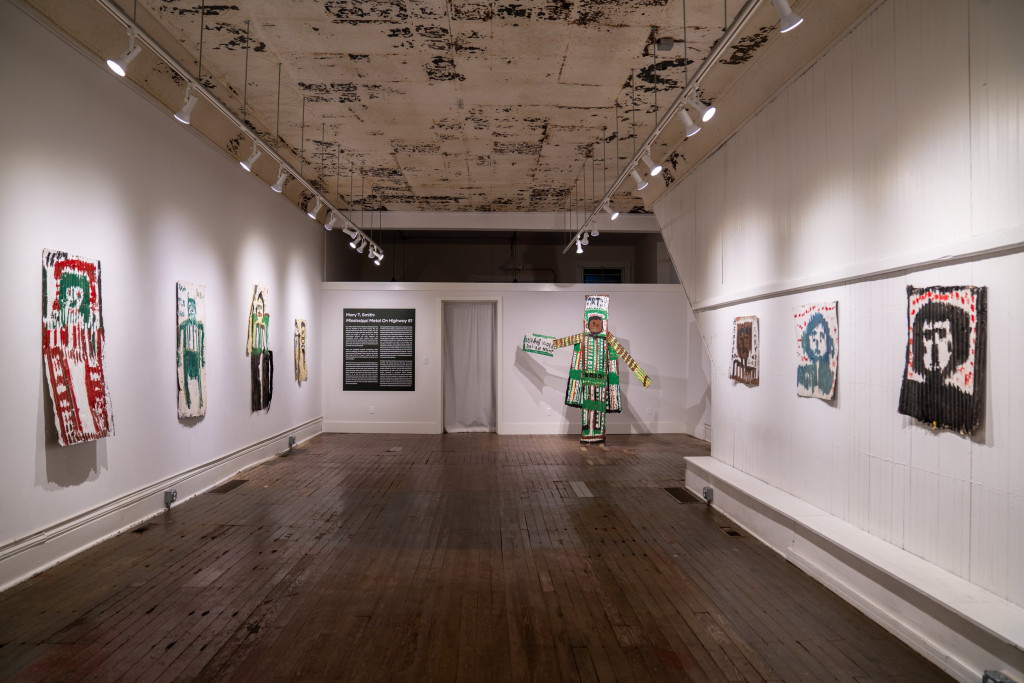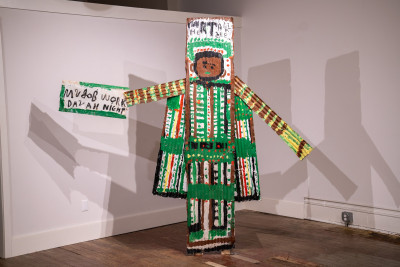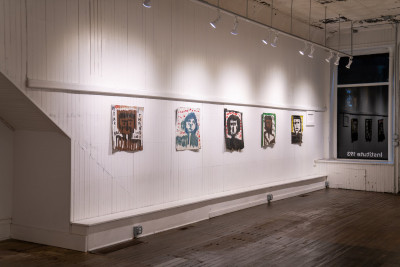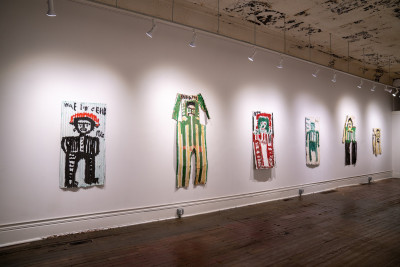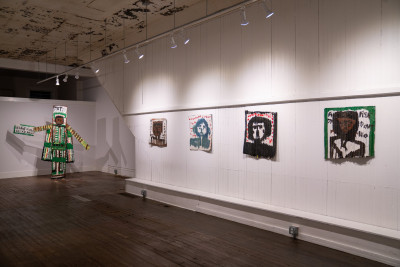Mississippi Metal On Highway 51
Mary T. Smith
In March 1986, James Smith Pierce traveled to Hazelhurst, Mississippi where he documented Mary Tillman Smith’s yard, including this installation of works set along the artist’s fence line. The large untitled figure at center is among early paintings by Smith featured in the Institute 193 exhibition titled: Mississippi Metal on Highway 51.
Mississippi Metal On Highway 51 presents a collection of Mary T. Smith’s earliest paintings, completed in the 1970s and early ‘80s. They take for a canvas those same hand cut sheets of tin that she used for building material. Bold portraits in black, red, and green float on a stark white background. The work from this period is often coupled with slogans or phrases, with varying degrees of legibility, which function as devotionals, admonishments, questions, or cryptic self reminders. Smith was a devout believer, and many of her portraits were depictions of Christ or other religious figures, marking the long history of Christian iconography as an obvious influence. Her house also sat within eyesight of two large billboards along the highway, and one could easily draw a line between the language of advertising Smith saw constantly – a striking image paired with a succinct phrase, calibrated to wedge an idea into the mind of the viewer – and the language she began to develop in these paintings.
The ideas that Smith wished to communicate are simple and powerful. They stretch deep into the past, yet remain immediately recognizable and utterly of our time. Work which so powerfully calls to mind both cave paintings––perhaps our earliest examples of fine art––and the ultra-contemporary pervasiveness of the selfie must truly have tapped into a certain universality of experience. Smith’s paintings celebrate the essences of human life: profound spirituality, and joy in the face of hardship. An undeniable eye for shape and color coupled with her determination to be free and to express that freedom left a lifetime’s worth of monuments to presence, both her own and a collective presence extending outwards from that home in Hazlehurst to include her friends, community, and ultimately all of us who gaze upon her work.
A poor child of Mississippi condemned to the hardest work, this African-American woman began, at the dawn of her life, a work that resembles a real graphic blues. Mary T. Smith gave shape to her personal cosmology by painting on sheets of corrugated iron and wooden panels
arranged around her house. Her “solar aesthetic”—says Daniel Soutif—and her powerfully elementary modes of representation made a strong impression on Jean‑Michel Basquiat. Now considered an emblematic figure of American art brut, her works have been added to the Metropolitan Museum of Art (New York), the Smithsonian Museum of American Art (Washington) and the High Museum of Art (Atlanta) collections.
